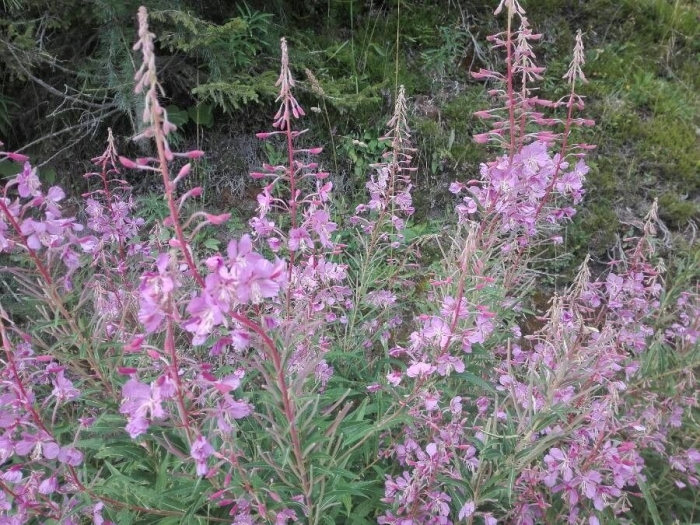Fireweed
(Chamerion angustifolium)
Fireweed (Chamerion angustifolium)
/
/

giancarlo romanelli
CC BY-SA 4.0
Image By:
giancarlo romanelli
Recorded By:
Copyright:
CC BY-SA 4.0
Copyright Notice:
Photo by: giancarlo romanelli | License Type: CC BY-SA 4.0 | License URL: https://creativecommons.org/licenses/by-sa/4.0/ | Attribution: giancarlo romanelli (cc-by-sa) | Rights Holder: giancarlo romanelli | Publisher: PlantNet | Date Created: 2020-08-18T15:26:16Z | Title: Epilobium angustifolium L.: flower | Notes: Epilobium angustifolium L.: flower |



















































Estimated Native Range
Summary
Chamerion angustifolium, commonly known as fireweed and also referred to as great willowherb in parts of Canada, rosebay willowherb in Britain and Ireland, and bombweed in the United Kingdom, is a deciduous perennial herb native to a wide range of habitats including boreal forests, open woodlands, and disturbed areas across the temperate Northern Hemisphere. It thrives in areas that have been cleared by fire, hence its common name, and is often one of the first species to colonize disturbed soils. The plant typically grows to a height of 0.5–2.5 m (1½–8 feet) with a characteristic reddish stem that is usually simple, erect, and smooth, with scattered alternate leaves. The showy flowers are 2 to 3 cm in diameter, slightly asymmetrical, with four magenta to pink petals and four narrower sepals, blooming from midsummer to early autumn.
Fireweed is valued for its ornamental appeal, with its vibrant flowers and ability to attract pollinators. It is used in wildflower gardens, borders, and naturalized areas. The plant is easy to maintain, tolerating a range of soil conditions, though it prefers full sun and well-drained soils. A white-flowered cultivar, C. angustifolium ’Album’, is recognized by the Royal Horticultural Society for its garden merit. However, gardeners should be aware of its potential to spread aggressively, particularly in regions outside its native range. It can become invasive, outcompeting native flora and altering ecosystems.CC BY-SA 4.0
Fireweed is valued for its ornamental appeal, with its vibrant flowers and ability to attract pollinators. It is used in wildflower gardens, borders, and naturalized areas. The plant is easy to maintain, tolerating a range of soil conditions, though it prefers full sun and well-drained soils. A white-flowered cultivar, C. angustifolium ’Album’, is recognized by the Royal Horticultural Society for its garden merit. However, gardeners should be aware of its potential to spread aggressively, particularly in regions outside its native range. It can become invasive, outcompeting native flora and altering ecosystems.CC BY-SA 4.0
Plant Description
- Plant Type: Herb
- Height: 2-5 feet
- Width: 1-3 feet
- Growth Rate: Rapid
- Flower Color: Pink, Purple
- Flowering Season: Summer
- Leaf Retention: Deciduous
Growth Requirements
- Sun: Full Sun
- Water: Low, Medium
- Drainage: Slow, Medium, Fast
Common Uses
Bank Stabilization, Bee Garden, Bird Garden, Border Plant, Butterfly Garden, Deer Resistant, Drought Tolerant, Erosion Control, Hummingbird Garden, Rock Garden, Showy Flowers
Natural Habitat
Boreal forests, open woodlands, and disturbed areas across the temperate Northern Hemisphere
Other Names
Common Names:
Scientific Names: , Chamerion angustifolium, Epilobium angustifolium, Chamaenerion angustifolium, Epilobium brachycarpum, Epilobium latifolium, Epilobium montanum, Chamaenerion angustifolium subsp. angustifolium, Epilobium spicatum, Chamaerion angustifolium
GBIF Accepted Name: Chamaenerion angustifolium subsp. angustifolium